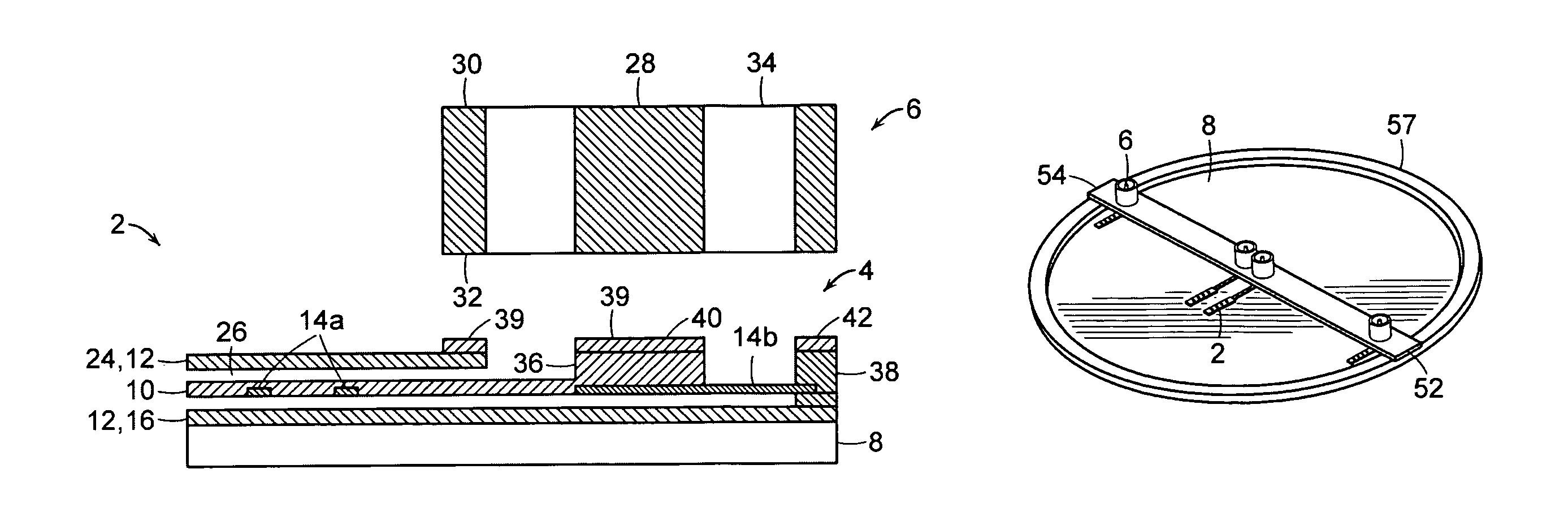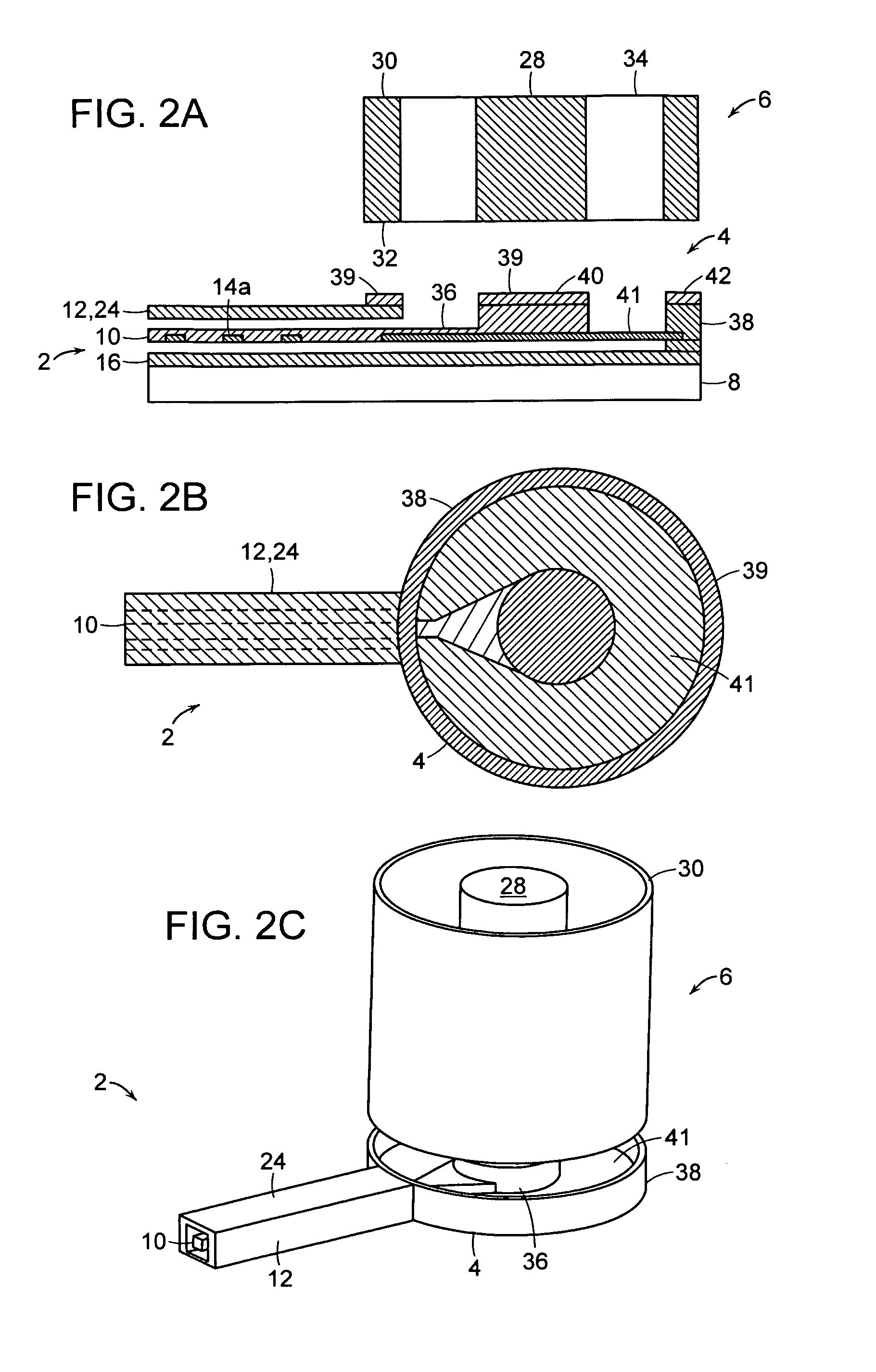Coaxial transmission line microstructures and methods of formation thereof
a technology of transmission line microstructure and coaxial transmission line, which is applied in the direction of waveguides, antennas, insulation conductors/cables, etc., can solve the problems of inability to simple join the two structures, inability to achieve simple joining of the two structures, and inability to achieve propagating wave reflection to a degree that is not acceptable for most applications
- Summary
- Abstract
- Description
- Claims
- Application Information
AI Technical Summary
Benefits of technology
Problems solved by technology
Method used
Image
Examples
Embodiment Construction
[0022]The exemplary processes to be described involve a sequential build to create three-dimensional microstructures. The term “microstructure” refers to structures formed by microfabrication processes, typically on a wafer or grid-level. In the sequential build processes of the invention, a microstructure is formed by sequentially layering and processing various materials and in a predetermined manner. When implemented, for example, with film formation, lithographic patterning, deposition, etching and other optional processes such as planarization techniques, a flexible method to form a variety of three-dimensional microstructures is provided.
[0023]The sequential build process is generally accomplished through processes including various combinations of: (a) metal, sacrificial material (e.g., photoresist) and dielectric coating processes; (b) surface planarization; (c) photolithography; and (d) etching or planarization or other removal processes. In depositing metal, plating techni...
PUM
| Property | Measurement | Unit |
|---|---|---|
| outer diameter | aaaaa | aaaaa |
| outer diameter | aaaaa | aaaaa |
| outer diameter | aaaaa | aaaaa |
Abstract
Description
Claims
Application Information
 Login to View More
Login to View More - R&D
- Intellectual Property
- Life Sciences
- Materials
- Tech Scout
- Unparalleled Data Quality
- Higher Quality Content
- 60% Fewer Hallucinations
Browse by: Latest US Patents, China's latest patents, Technical Efficacy Thesaurus, Application Domain, Technology Topic, Popular Technical Reports.
© 2025 PatSnap. All rights reserved.Legal|Privacy policy|Modern Slavery Act Transparency Statement|Sitemap|About US| Contact US: help@patsnap.com



